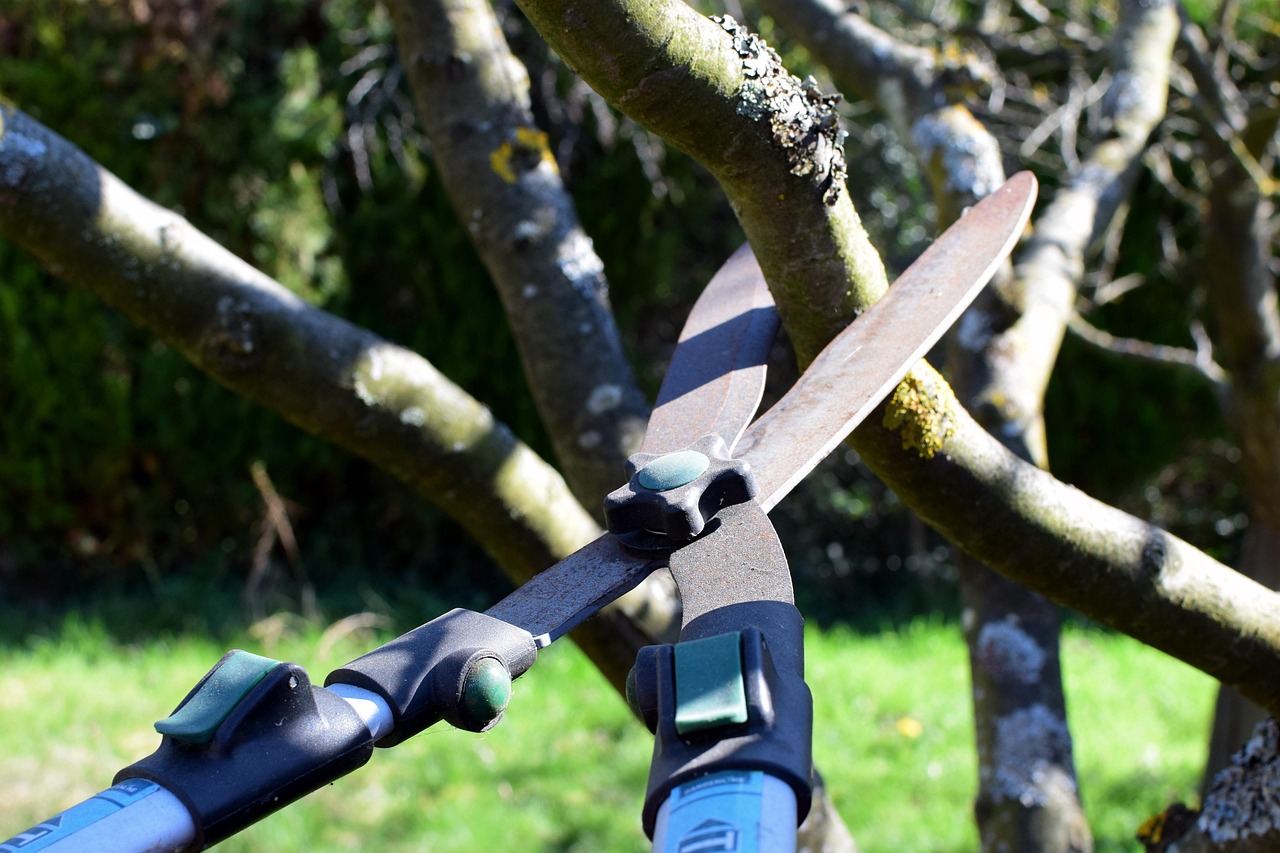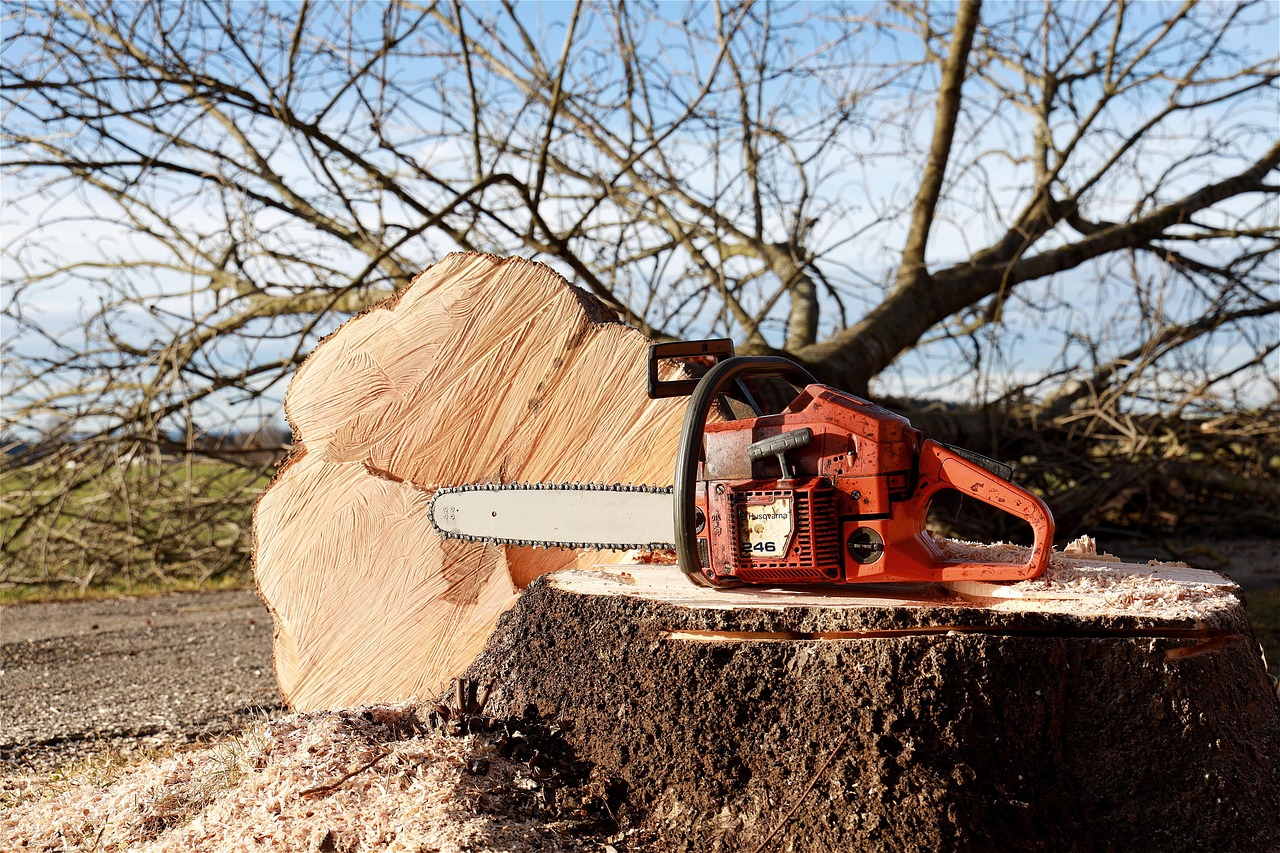Tree pruning is essential for ensuring sunlight access in vegetable gardens. By selectively removing branches, you can enhance light penetration, improve air circulation, and promote healthier growth for your vegetables. Proper pruning techniques are crucial to maximize yield and maintain the health of both trees and plants.
Sunlight is a vital component for photosynthesis, the process through which plants produce energy. In vegetable gardens, adequate sunlight exposure is especially important. Trees planted near vegetable gardens can create shade, limiting the amount of light that reaches vegetable plants. This can significantly affect their growth and productivity. Therefore, understanding tree pruning is key to managing light access effectively.

Tree pruning not only enhances sunlight access but also helps maintain the overall health of the tree itself. When trees are pruned correctly, they can grow stronger and more resilient. This is particularly important in areas where trees are close to garden spaces. Pruning can prevent branches from becoming too dense, allowing more light to filter through. Additionally, it reduces the risk of disease by improving air circulation within the tree canopy.
The Importance of Sunlight in Vegetable Gardening
Vegetable plants require varying amounts of sunlight to thrive. Understanding the sunlight needs of specific crops can help you plan your garden layout better. Here are some common sunlight requirements for popular vegetables:
| Vegetable | Sunlight Requirement |
|---|---|
| Tomatoes | Full sun (6-8 hours) |
| Cucumbers | Full sun (6-8 hours) |
| Lettuce | Partial shade (4-6 hours) |
| Carrots | Full sun (6-8 hours) |
| Spinach | Partial shade (4-6 hours) |
As illustrated in the table above, certain vegetables thrive in full sun, while others prefer some shade. When trees overshadow vegetable gardens, it can lead to stunted growth and poor yields. Thus, proper tree pruning becomes a vital practice to ensure that vegetables receive their required sunlight.

Effective pruning techniques can greatly impact the overall health of both trees and vegetable plants. Here are some key benefits of tree pruning:
- Improves light penetration, enhancing growth.
- Encourages new growth by removing dead or diseased branches.
- Reduces competition for nutrients and water between trees and plants.
- Enhances air circulation, reducing the risk of fungal diseases.
- Aids in shaping trees for better aesthetics and functionality.
When planning to prune trees for sunlight access, timing is crucial. The best time to prune most trees is during their dormant season, typically late winter or early spring before new growth begins. This timing allows for healing before the growing season starts. However, some species may have specific requirements, so it’s important to research the particular types of trees in your garden.
Basic Pruning Techniques
There are several techniques to consider when pruning trees for sunlight access. Below are some basic methods:

- Thinning: This involves removing selected branches throughout the tree to allow more light and air to reach the interior.
- Heading: Cutting back branches to a bud or lateral branch encourages bushier growth while maintaining shape.
- Crown Raising: Removing lower branches raises the crown of the tree and allows more light to reach the garden below.
- Crown Reduction: Reduces the overall height of the tree while maintaining its shape, helping to manage shade levels.
Each technique serves a specific purpose and should be chosen based on your garden’s needs and the type of tree you are working with. Understanding how to implement these techniques will enhance not only your vegetable garden’s productivity but also the aesthetic appeal of your landscape.
In addition to these methods, using the right tools is essential for effective pruning. Sharp pruning shears, loppers, and saws are crucial for making clean cuts that promote healing. Always ensure your tools are sanitized before use to prevent the spread of diseases.
Proper tree pruning can transform a shaded vegetable garden into a thriving space filled with healthy plants. With careful planning and execution, gardeners can create an optimal environment that fosters growth and productivity.

Understanding Tree Species and Their Growth Patterns
When it comes to tree pruning for sunlight access, understanding the species of trees in your garden is crucial. Different tree species have unique growth patterns, branching structures, and light requirements. This knowledge helps you determine the best pruning techniques and timing specific to each tree type.
Some trees grow quickly and develop a dense canopy, while others may have a more open structure. Here are a few common tree species found in gardens:
- Maple: Known for their beautiful foliage, maples can grow quite large and dense. Regular thinning is important to allow light to penetrate.
- Oak: Oaks have a broad canopy and can create significant shade. Pruning should focus on removing lower limbs to increase light access.
- Pine: Pines tend to have an open structure. Pruning may be less frequent but should still focus on removing any overlapping branches.
- Fruit Trees: These trees often require more attention to maintain shape and encourage fruit production. Thinning and heading cuts are typically beneficial.
Identifying the specific needs of each tree species will guide you in developing a tailored pruning strategy that promotes both tree health and efficient sunlight access.
Timing Your Pruning for Maximum Effectiveness
Timing is essential when it comes to pruning trees for sunlight access. Pruning at the right time not only enhances light penetration but also ensures the health of the tree. Here are some guidelines for optimal timing:
- Dormant Season: Late winter or early spring is generally the best time for most trees. During this period, trees are not actively growing, which reduces stress from pruning.
- After Flowering: For flowering trees, prune after they bloom to avoid cutting off new buds that will produce flowers next season.
- Summer Pruning: In some cases, summer pruning can be beneficial to control growth and improve light access. This technique should be used sparingly.
Understanding the seasonal growth patterns of trees will help you make informed decisions regarding when to prune effectively.
Pruning Techniques for Different Tree Types
The approach to pruning can vary significantly based on the type of tree you are working with. Here are tailored techniques for several common tree types:
Deciduous Trees
Deciduous trees, such as maples and oaks, lose their leaves in winter. The best time to prune these trees is during their dormant season. Key techniques include:
- Thinning Cuts: This technique removes entire branches back to their base to open up the canopy and allow light to pass through.
- Reduction Cuts: These cuts shorten branches to a lateral bud or branch, maintaining the tree’s shape while allowing light to filter down.
Evergreen Trees
Evergreen trees maintain their needles year-round, making pruning somewhat different. For evergreens like pines and spruces:
- Pinching: Instead of cutting branches, pinching off new growth (candles) can control height without compromising shape.
- Selective Pruning: Focus on removing dead or diseased branches to improve air circulation and light penetration without altering the tree’s appearance drastically.
Fruit Trees
Pruning fruit trees requires careful attention to promote fruit production and maintain health. Effective methods include:
- Crown Management: Maintain an open center by removing inward-growing branches, ensuring that sunlight reaches all parts of the tree.
- Summer Pruning: Lightly prune in summer after fruiting to manage growth and encourage better lighting conditions for developing fruit.
The Role of Planting Position
The placement of trees in relation to vegetable gardens plays an important role in managing sunlight access. Proper planning before planting can mitigate future issues with shading. Here are considerations for planting positions:
- Distance from Garden: Plant trees at a sufficient distance from vegetable plots to reduce shading. A general rule is to plant them at least 10-15 feet away from garden beds.
- Tree Height: Consider the mature height of trees when planting. Taller trees should be placed on the north or east side of vegetable gardens to minimize shading during peak sun hours.
- Canopy Spread: Be aware of how wide the canopy will grow. Plan garden rows accordingly to ensure all plants receive adequate light throughout the day.
By considering these factors during the initial planting phase, gardeners can reduce the need for extensive pruning later on and create an optimal environment for vegetables.
Understanding tree species, timing, pruning techniques, and planting positions are all vital components in managing sunlight access for vegetable gardens. Armed with this knowledge, gardeners can ensure that their plants flourish under optimal conditions.
Tools and Techniques for Effective Pruning
Having the right tools is essential for successfully pruning trees to improve sunlight access in vegetable gardens. Using the proper equipment not only makes the job easier but also ensures clean cuts, which promote better healing and reduce the risk of disease. Below are key tools and techniques to consider.
Essential Pruning Tools
Here are some basic tools that every gardener should have for effective tree pruning:
- Pruning Shears: Ideal for cutting small branches and stems. Look for a model with sharp, stainless steel blades for clean cuts.
- Loppers: These are designed for larger branches and provide greater leverage. Choose loppers with a bypass design for healthier cuts.
- Hand Saw: A good hand saw can handle thicker branches that are too large for shears or loppers.
- Pole Pruner: This tool allows you to reach high branches without needing a ladder. It usually comes with a saw or shears at the end of a long pole.
- Safety Gear: Always wear gloves, safety glasses, and protective clothing to safeguard against injuries while pruning.
Proper maintenance of these tools is equally important. Regularly sharpen blades to ensure clean cuts and disinfect tools after each use to prevent disease spread.
Pruning Techniques
Choosing the right technique is crucial for achieving the desired results without harming the tree. Here are some common pruning techniques:
- Clean Cuts: Always make cuts just above a bud or lateral branch to promote healing.
- Avoid Topping: Topping is detrimental as it removes large portions of the tree, leading to weak growth and increased vulnerability to disease.
- Remove Dead or Diseased Wood: This encourages healthy growth and light penetration while preventing the spread of disease.
- Follow the 1/3 Rule: When pruning, never remove more than one-third of a tree’s canopy at a time. This helps maintain the tree’s health and structure.
Applying these techniques effectively will enhance your ability to manage light access while promoting overall tree health.
Common Mistakes to Avoid in Tree Pruning
Pruning can be an effective way to manage trees, but certain mistakes can hinder your efforts. Avoiding these pitfalls will help ensure successful outcomes:
- Improper Timing: Pruning at the wrong time can lead to stress or damage. Ensure you know the ideal pruning season for each tree type.
- Neglecting Tree Health: Always assess the health of the tree before pruning. If it shows signs of disease or stress, consult a professional before proceeding.
- Over-pruning: Removing too much foliage can impair a tree’s ability to photosynthesize, leading to weak growth and potential death.
- Ignoring Tree Structure: Cutting branches without considering the overall structure can lead to an imbalanced tree. Aim for an aesthetically pleasing shape that supports healthy growth.
Avoiding these common mistakes will not only improve the effectiveness of your pruning efforts but also contribute to healthier trees and better vegetable growth.
The Impact of Weather Conditions on Pruning
The weather can significantly influence both the timing and effectiveness of tree pruning. Here are some factors to consider:
- Moisture Levels: Wet conditions can lead to fungal infections if you prune at that time. Aim to prune during dry weather when trees are less likely to harbor pathogens.
- Temperature: Extreme temperatures can stress trees. Avoid pruning during very hot or very cold periods to minimize shock.
- Windy Days: Strong winds can make it difficult to control cutting tools and increase the risk of accidental injuries. Choose calm days for pruning activities.
Monitoring weather conditions will enhance your ability to prune effectively while also protecting both you and your trees from adverse effects.
Integrating Pruned Material into Your Garden
After pruning, consider how to utilize the material you’ve removed. There are several beneficial ways to incorporate pruned branches and leaves into your garden:
- Mulch: Chopping up pruned branches and leaves can create mulch, which helps retain soil moisture and suppress weeds in your vegetable garden.
- Composting: Add smaller pruned materials to your compost pile. Over time, they will break down and enrich your soil with nutrients.
- Wood Chips: Larger branches can be shredded into wood chips, which are excellent for paths or as organic ground cover around trees.
Using pruned materials wisely not only reduces waste but also contributes positively to your garden’s health and fertility.
The right tools, techniques, and careful planning will enhance your tree pruning efforts, ultimately improving sunlight access in your vegetable garden. By avoiding common mistakes and considering weather conditions, gardeners can achieve successful pruning outcomes that foster healthy plant growth.
Long-Term Maintenance and Monitoring
After successfully pruning your trees for optimal sunlight access, ongoing maintenance and monitoring are crucial for sustained health and productivity. Regularly assessing both the trees and the vegetable garden will help identify any new issues that may arise and ensure that your previous efforts yield long-term benefits.
Regular Inspections
Conducting regular inspections of your trees and vegetable garden is essential. Look for signs of:
- New Growth: Monitor how well the trees are responding to pruning. Healthy new growth indicates that the trees are thriving.
- Pests: Keep an eye out for any signs of pest infestations that may threaten both trees and plants.
- Diseases: Check for unusual discoloration or wilting in leaves, which can indicate disease. Early detection can prevent further spread.
- Shading Issues: As trees grow, they may start to shade the garden again. Regularly assess light levels in your vegetable patch.
By conducting these checks, you can make timely adjustments and address any problems before they escalate.
Seasonal Pruning Adjustments
While major pruning is often done during the dormant season, minor adjustments may be needed at other times of the year. Here are some tasks to consider:
- Summer Maintenance: During the growing season, lightly prune any vigorous growth that might start to shade your vegetables. This helps maintain proper light levels.
- Annual Assessment: At the end of each season, evaluate your pruning strategy’s effectiveness. Consider what worked well and what could be improved.
Being proactive with these seasonal adjustments can help maintain both tree health and sunlight access for your vegetables.
The Benefits of Companion Planting
An effective strategy to improve light utilization in your garden involves companion planting. This method pairs plants that benefit from each other’s growth patterns and sunlight needs. Here are some benefits:
- Maximized Space: By strategically placing plants, you can optimize sunlight access even in partially shaded areas.
- Pest Control: Certain plants can deter pests that may otherwise threaten your vegetable crops.
- Nutrient Sharing: Some plants help improve soil quality or provide nutrients that benefit neighboring plants.
Companion planting not only enhances productivity but also contributes to a more resilient garden ecosystem.
Utilizing Technology for Garden Management
Advancements in technology can aid significantly in managing sunlight access and overall garden health. Here are some tools worth considering:
- Garden Planning Apps: Various apps allow you to map out your garden layout, helping you visualize sunlight exposure and plant placement.
- Drones: Drones equipped with cameras can assess large gardens from above, providing insights into shading issues and plant health.
- Soil Moisture Sensors: These devices help monitor water levels, ensuring that plants receive adequate hydration without excess moisture that can lead to disease.
Incorporating technology into your gardening practices can streamline management tasks and enhance overall productivity.
Conclusion
Tree pruning for sunlight access in vegetable gardens is a multifaceted process that requires careful planning and execution. Understanding tree species, implementing effective pruning techniques, and considering planting positions are all vital components of this practice. Regular monitoring and seasonal adjustments ensure that both trees and vegetables remain healthy while maximizing sunlight exposure.
By utilizing pruned materials wisely, integrating companion planting, and leveraging technology, gardeners can create thriving environments that foster healthy plant growth. The right approach not only enhances the productivity of your vegetable garden but also contributes positively to the overall ecosystem. With ongoing care and attention, gardeners can enjoy bountiful harvests and beautiful landscapes for years to come.
